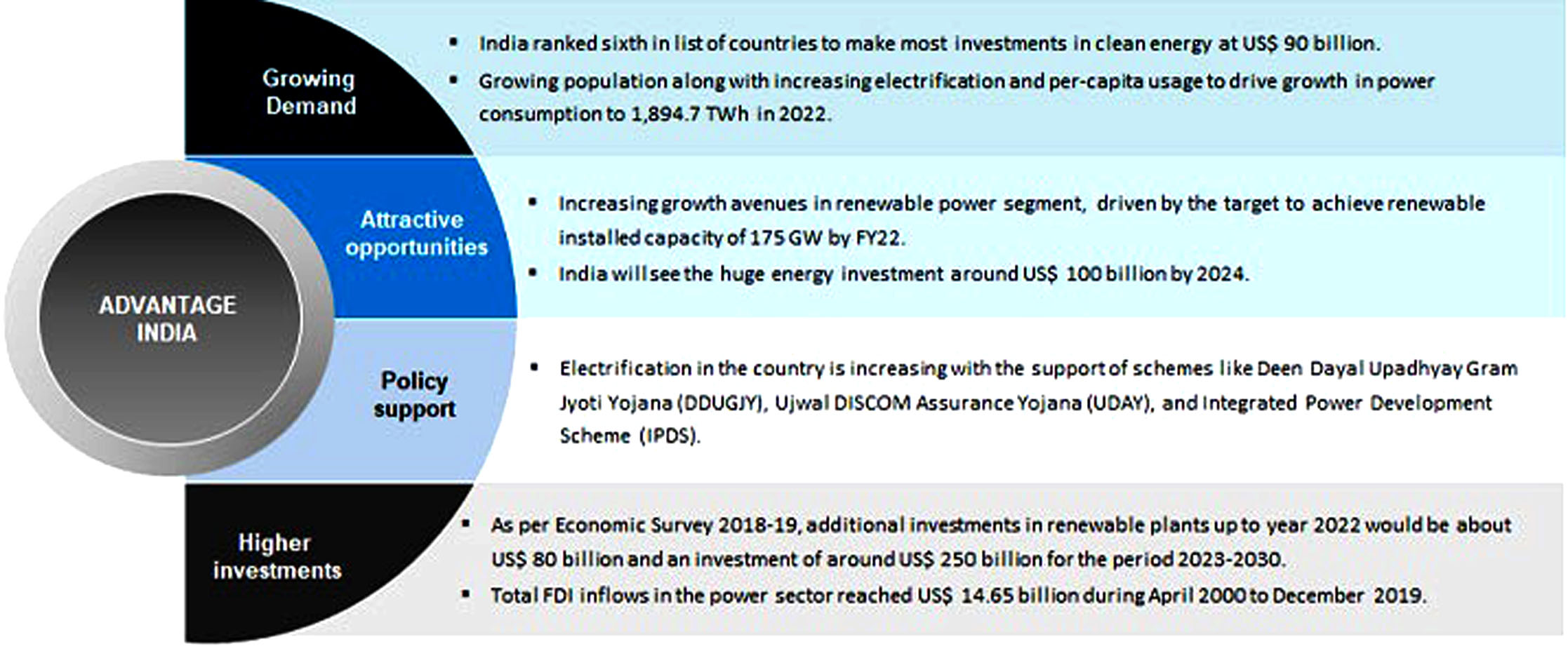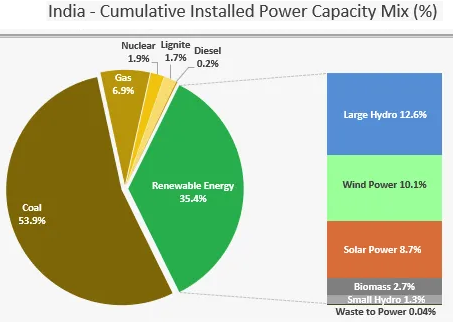Indian Economy
Power Sector in India
- 01 May 2020
- 5 min read
This article is based on “Toothless reform move for power sector” published in The Economic Times on 29/04/2020. It talks about the challenges and solutions pertaining to India’s power sector.
Indian government’s Power for all by 2022 vision, aims to provide access to affordable, reliable, sustainable and modern energy. In order to achieve this mission, the government has recently announced to make certain amendments to the Electricity Act 2003.
Some major changes being proposed by draft Electricity (Amendment) Bill, 2020, includes the constitution of the Electricity Contracts Enforcement Authority, the appointment of distribution sub-franchisees, development of an exhaustive National Renewable Energy Policy, and rationalisation of tariffs, among others.
The draft is well-intentioned but it may not address the systemic flaws in the power sector.
Systemic Issues Faced by Power Sector in India
Power Generation Issues
- Fossil fuel derived energy generation: Thermal power based on fossil fuel such as coal, natural gas and diesel accounts for 80% of the country's generation.
- Moreover, the majority of plants in India are old and inefficient.
- Higher Cost of Fuel: Coal extraction from state-run Coal India (a near-monopoly), has stagnated due to delayed environmental clearances, land acquisition troubles and little investment in advanced technologies.
- Many power companies have to look for coal mines overseas and source more expensive imports (despite having abundant coal reserves).
Transmission and Distribution Issues
- Tariffs haven't risen enough for years to cover costs for subsidies in the agriculture sector. Also, high aggregate technical and commercial (AT&C) losses, has forced electricity distributors (discoms) into losses as high as 40% in some states, while the country-wide average is 27%.
Note:
The discoms suffer Aggregate Technical and Commercial (AT&C) Losses.
- Technical Loss: It is due to the flow of power in transmission and distribution systems.
- Commercial Loss: It is due to the theft of electricity, deficiencies in metering, etc.
- Discoms are not able to pay the power generators regularly simply because they have a cash flow problem, which stems from the low tariffs awarded by the regulatory commissions.
- Such low tariffs result in a wide gap between the average per-unit cost of supply (ACS) and average revenue realised (ARR).
- These issues have resulted in the outstanding dues of discoms, which has even increased after the implementation of UDAY (Ujwal Discom Assurance Yojana).
- Owing to the poor financial health of the dicoms, there are less new investments in the electricity sector (particularly by the private sector).
- High industrial/commercial tariff and the cross-subsidy regime have affected the competitiveness of the industrial and commercial sectors.
Way Forward
- Subsidy Reforms: For agriculture, the direct subsidy per acre of land through Direct Benefit Transfer (DBT) may be considered instead of providing separate subsidies for fertilizers, electricity, crop insurance etc.
- The KUSUM scheme provides a suitable alternative to the power subsidy model in agriculture.
- The scheme intends to promote the use of solar pumps for agriculture and make provisions the local discoms should buy surplus power from the farmer.
- There is a need to ensure effective enforcement of rationalization of cross-subsidy.
- The government needs to actively promote cross-border electricity trade to utilize existing/upcoming generation assets.
- The SAARC electricity grid is a step in the right direction.
- To manage the demand for power, it is necessary to introduce 100% metering-net metering, smart meters, and metering of electricity supplied to agriculture.
- There is also a need to Introduce performance-based incentives in the tariff structure.
|
Drishti Mains Question Discuss the challenges in achieving the Indian government’s vision of Power for all by 2022. |
This editorial is based on “Strategic shift: On home isolation of mild coronavirus cases” which was published in The Hindu on April 30th, 2020. Now watch this on our youtube channel.








